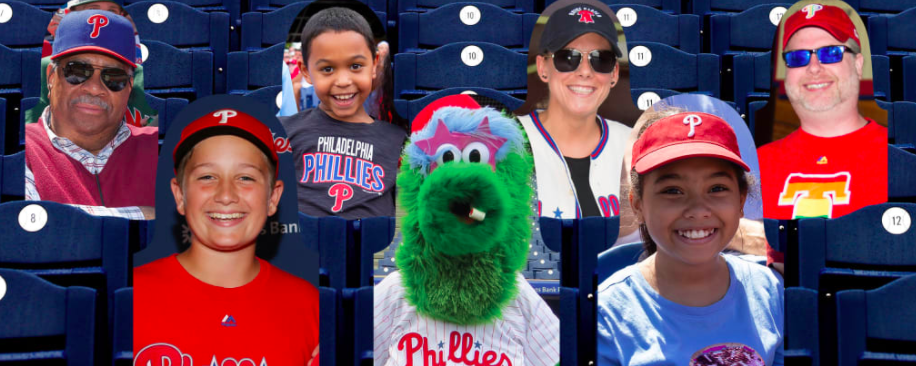Caught on Camera: Simulated Audiences – for a Price
written by Miranda Allegar and Elena Araoz - November 18, 2020
The overwhelming transition of live stage performance onto streaming platforms with free, often unticketed events, has helped pivot away from the status quo of pricey, limited seats in a physical performance venue. We’ve seen this in the blossoming of online theater, in the emergence of the online “night clubs” and dance parties, in concerts of the past erased in favor of digitally streamed performances from popular musicians and bands, often performing straight from their own home to yours. Consider music festival Lollapalooza, which transformed its usual concert series into a multi-day digital performance broadcast through YouTube for Lolla2020. The world of sports too has become streamable, with professional teams creating “bubbles” for their players to live and work within, to mixed success. This then seems to bode well for a more accessible world of content and entertainment, albeit one still limited to those with the means to access the digital sphere, replete with wifi charges and technological costs.
However, as the world of sports has begun to reveal, where a profit may be turned, the businesses behind these accessible performances will seek them out, creating new hierarchies of privilege and engagement for those with the means to access them. As the sport of baseball came back online, governed by the MLB and eschewing the “bubble” set-up of other leagues like the NBA, teams began offering their fans the chance to be a part of the games themselves, much as they’d be able to buy a seat pre-COVID. This time, however, they’d be just a face in the crowd– literally. Teams within the league have begun offering fans the chance to buy cardboard cutouts of themselves to be placed in stadium seats, complete with the ever-enticing chance to be spotted on camera. For the Houston Astros, the price of these cutouts was placed at $100, which were on display through the season’s end in October, after which participants could pick up their cutouts as a keepsake. The Philadelphia Phillies offered a lower price of $40 for the general public and $25 for season ticket holders. These payments often go towards the team’s charitable foundations as tax-deductible contributions, with the Los Angeles Dodgers raising over $800,000 thus far.
To the contrary, though, a high-tech option has emerged through professional wrestling company WWE, which has constructed a new performance arena, “the ThunderDome,” first in Orlando in August of 2020, before re-building in Tampa Bay, Florida starting in December of 2020. The stadium has been outfitted with pyrotechnics, drones, and about a thousand virtual boards, onto which audience feeds are broadcast, created a simulated, real-time audience for the sport. Here, fans may simply register for a virtual seat at the match through a quick form and some patience. Here then, unlike in baseball, the pandemic seems to be an equalizing factor, allowing more and more fans access to seeing and being seen at a match.
As other varieties of live performance continue to weather the storm of this pandemic, we at ISDP expect other, similar price tiers for audience engagement will arise. While the more egalitarian online world amidst a formidable and unequal public health crisis proved a short respite for many, the fact remains that behind each live performance lies an industry, equally struggling as the unemployment rates for performing artists skyrocket and stimulus plans come to an end, a disheartening sign that the utopian world of free and equal content for all likely will not hold as we remain indoors.
Many traditional theatre spaces were built with an obvious hierarchy in its audience arrangement; box seats often offer terrible views of the stage but are choice seats for audience members who want to be seen and have their presence felt, theatre-goers on a budget can buy “obstructed-view” seats often finding the stage blocked by a pillar. Buying the opportunity to have a seat in a theatre etched with your name for you, your family, or your business is both a level of support for the organization and its infrastructure and is a form of advertising or memorializing your devotion to the theatre. Already, theater-making amidst the pandemic has led to a re-examination of the physical theater box seat, a notion that has become increasingly obsolete in recent years as theater-goers focus on the audience experience, on seeing the show rather than being seen. This phasing out came with good reason. The box seat has long been associated with class hierarchies, with racial segregation. However, the arrangement of a house into box seats provides unexpected benefits in the time of social distancing, providing a pre-built way to isolate groups of visitors from one another to minimize risk of contagion.
Notably, Philadelphia’s Wilma Theater has taken to the idea with alacrity, reimagining their space in the style of Shakespeare’s Globe Theater with audience box seats spread over two levels, separated from each other by dividers and open to the stage. The configuration allows the theater to seat between thirty and one hundred audience members and to re-arrange seating for different shows. The theater also plans to continue to stream its productions during the pandemic, installing cameras in multiple vantage points to enhance the at-home experience. The theater hopes to welcome some patrons into the theater under these new circumstances and new seating arrangements sometime in early 2021, a delay from an original plan to integrate this hybrid model for fall of 2020.
However, in addition to a resurgence of box seating potentially on the horizon in 2021, taking a hint from the sports world, perhaps virtual performance may sell the opportunity to see and be seen.


